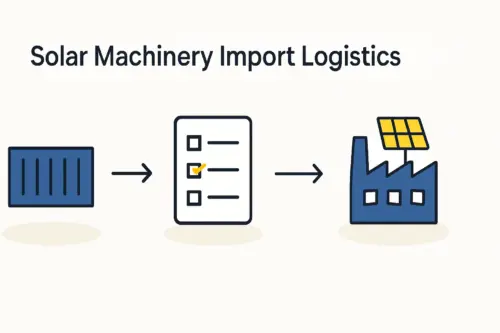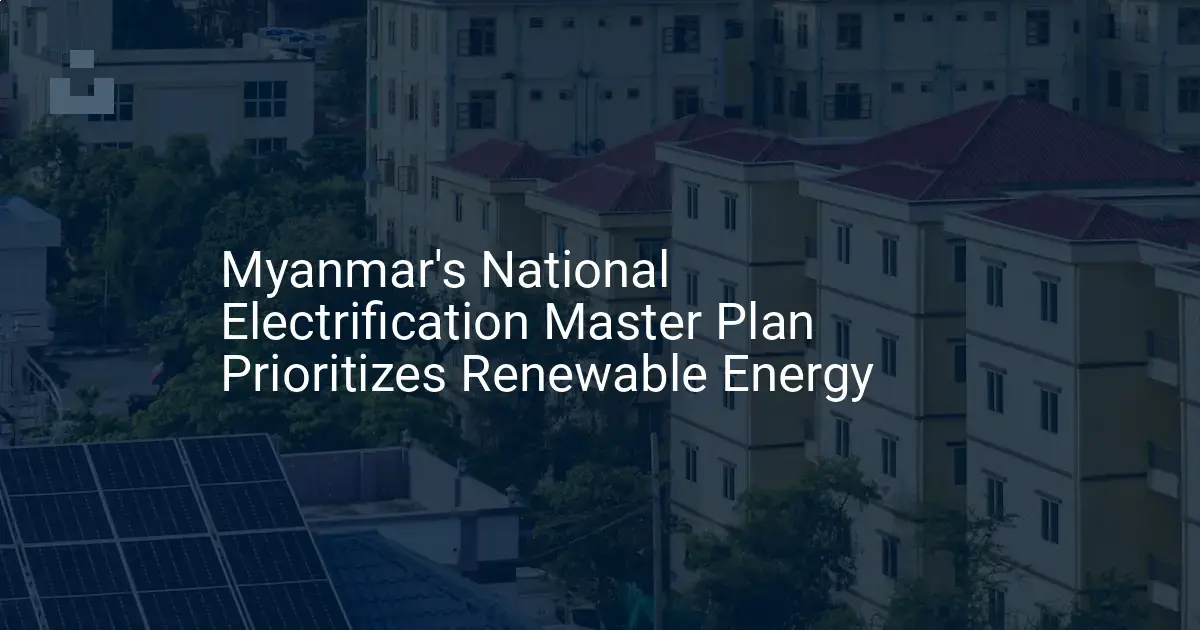For international entrepreneurs exploring new frontiers in solar module production, Southeast Asia is a compelling region. Myanmar, in particular, presents unique opportunities with its strategic location and developing economy. Navigating its investment landscape requires a clear understanding of the areas designed to attract foreign capital: the Special Economic Zones (SEZs).
Choosing the right SEZ isn’t just a matter of geography; it’s a strategic decision that will impact everything from supply chain efficiency to long-term profitability. This guide evaluates Myanmar’s three principal SEZs—Thilawa, Kyaukphyu, and Dawei—for entrepreneurs looking to establish a solar module manufacturing facility. We’ll examine critical factors like infrastructure, logistics, and investment incentives to help business leaders make a more informed decision.
Understanding the Role of SEZs in Myanmar’s Industrial Strategy
Special Economic Zones are geographically defined areas created to attract foreign direct investment. Governments establish these zones by offering a more favorable business environment than in the rest of the country. The core advantages typically include tax holidays, customs duty exemptions, streamlined administrative procedures, and superior infrastructure.
For a capital-intensive and logistically complex venture like solar manufacturing, these benefits are not just helpful—they are often essential for feasibility. The success of a turnkey solar manufacturing line depends heavily on a stable and efficient operating environment. Myanmar’s SEZs aim to provide precisely that foundation.
A Comparative Analysis of Myanmar’s Key SEZs
Each of Myanmar’s major SEZs has a distinct character, strategic focus, and stage of development. An investor’s choice will depend heavily on their specific business model, target markets, and risk tolerance.
Thilawa SEZ: The Established Front-Runner
Located just 25 kilometers south of Yangon, Myanmar’s commercial center, the Thilawa SEZ is widely regarded as the country’s most successful and developed zone. As a joint venture between Myanmar and Japanese public and private sectors, it operates with a high degree of efficiency and transparency.

Key Advantages for Solar Manufacturing:
-
Superior Infrastructure: Thilawa offers reliable, high-quality infrastructure, including a stable electricity grid, treated water supply, and high-speed fiber optic internet. For a manufacturing process sensitive to power fluctuations, this stability is a decisive advantage. The stringent solar factory building requirements are more easily met here.
-
Streamlined Logistics: The zone has its own port terminal, the Thilawa International Bulk Terminal (TIBT), capable of handling raw materials and finished goods. Its proximity to Yangon offers access to the country’s largest pool of logistics providers and a skilled labor force.
-
Proven Administrative System: The Thilawa SEZ Management Committee operates a highly effective One-Stop Service Center (OSSC), which significantly simplifies business registration, licensing, and customs clearance. This reduces bureaucratic delays, a common challenge in emerging markets.
Ready to make big Profits?
The solar Industry is Booming
WE HELP NEWCOMERS to the solar industry start their own solar module production line. Customers can make BIG PROFITS by selling modules and finding investors, without wasting money and time on things they don't need!
Consideration: While the cost of leasing land in Thilawa is higher than in other SEZs, this premium is often justified by the lower operational risks and faster path to production.
Kyaukphyu SEZ: The Strategic Gateway
Situated on the coast of Rakhine State, the Kyaukphyu SEZ is a cornerstone of China’s Belt and Road Initiative (BRI) in Myanmar. Its primary feature is the development of a deep-sea port with direct access to the Bay of Bengal and, by extension, the Indian Ocean.

Key Advantages for Solar Manufacturing:
-
Global Export Potential: The deep-sea port is designed to accommodate large container vessels, making it an ideal hub for exporting finished solar modules to markets in South Asia, the Middle East, Africa, and Europe, bypassing the congested Strait of Malacca.
-
Energy and Logistics Hub: The zone is planned around an oil and gas terminal and extensive logistics infrastructure. For manufacturers with a high volume of international trade, this long-term vision is attractive.
-
Geopolitical Significance: As a key BRI project, Kyaukphyu is likely to receive sustained investment in its core infrastructure, particularly related to transport and energy links.
Consideration: Kyaukphyu’s development is at a much earlier stage than Thilawa’s. Investors must be prepared for ongoing infrastructure construction and a less mature local support ecosystem. The logistical advantages are significant but more prospective than current.
Dawei SEZ: The Ambitious Vision
The Dawei SEZ, located in the Tanintharyi Region on the Andaman Sea coast, is the most ambitious of the three projects. The master plan includes a deep-sea port, a massive industrial estate, and a highway connecting it directly to Thailand and the Greater Mekong Subregion economic corridor.

Key Advantages for Solar Manufacturing:
-
Access to ASEAN Markets: Once complete, the road link to Thailand would create an unparalleled land bridge, offering efficient access to the entire ASEAN manufacturing supply chain and consumer market.
-
Scale and Potential: The sheer size of the planned project offers the potential for large-scale operations with room for future expansion. The investment for a solar factory can be staged effectively in such an environment.
-
Lower Entry Costs: In its current phase, land and initial setup costs are expected to be significantly lower than in Thilawa.
Consideration: The Dawei project has faced numerous delays and challenges over the years. It represents a long-term, high-risk, high-reward opportunity suitable for patient investors with a pioneering vision. Its immediate viability for a time-sensitive manufacturing setup is questionable.
Key Investment Factors: A Summary
| Factor | Thilawa SEZ | Kyaukphyu SEZ | Dawei SEZ |
|---|---|---|---|
| Development Stage | Mature & Operational | Developing | Early Stage / Vision |
| Infrastructure | Excellent (Power, Water, Data) | In Progress | Planned |
| Logistics | Strong (Local & Regional) | Strong (Global Sea Freight) | Potentially Strong (ASEAN Land) |
| Primary Advantage | Low Operational Risk | Strategic Export Hub | Access to Greater Mekong |
| Ideal Investor | Seeks stability & speed | Export-focused, long-term | High-risk tolerance, patient |
Frequently Asked Questions (FAQ)
What are the typical tax benefits in a Myanmar SEZ?
Investors in an SEZ are typically eligible for an income tax exemption for the first five to seven years, followed by a 50% reduction for the subsequent five years. Specifics can vary by zone and industry.
How is the import of machinery and raw materials handled?
One of the key incentives is the exemption from customs duties and commercial taxes on machinery, equipment, and raw materials imported for use in the factory. This significantly lowers the initial capital outlay when importing raw materials for solar panels.
Are there restrictions on foreign ownership in an SEZ?
Foreign investors can generally hold 100% ownership of their enterprises within the SEZs, giving them full control over their operations.
What are the main logistical challenges to consider?
Beyond the zone’s boundaries, inland transportation can be a challenge. Assessing the full supply chain, from the port to the factory gate, is critical. Thilawa’s integration with Yangon’s established logistics network provides a significant advantage for new entrants. Obtaining necessary solar panel quality certifications for export also requires a reliable and documented logistics process.
Conclusion: Aligning Strategy with Location
The choice between Thilawa, Kyaukphyu, and Dawei is a strategic one that must align with an investor’s business plan.
Thilawa is the pragmatic choice for investors prioritizing speed to market, operational stability, and access to domestic and regional ASEAN markets. Its proven track record minimizes risk.
Kyaukphyu appeals to the global exporter with a long-term vision, willing to navigate a developing environment to secure a strategic position for trade with South Asia, the Middle East, and beyond.
Dawei remains a venture for the patient pioneer, offering immense potential as a future industrial nexus but carrying substantial near-term uncertainty.
Based on experience from J.v.G. Technology turnkey projects in emerging markets, a thorough due diligence process is indispensable. This process must go beyond analyzing government incentives to include on-the-ground assessments of infrastructure, logistics, and the local labor market. A successful solar manufacturing venture is built on careful, strategic planning, and choosing the right location is the first and most critical step.





